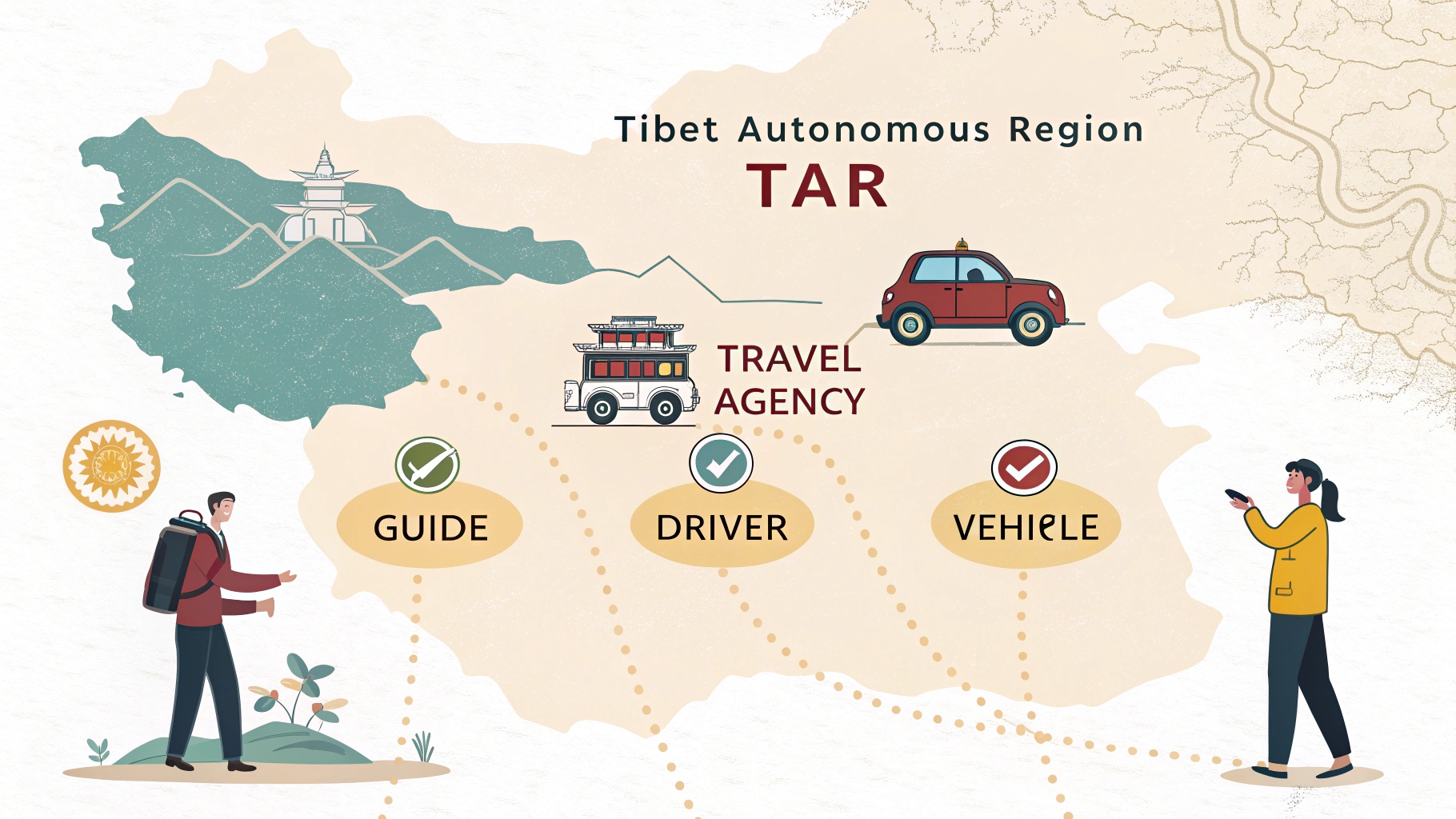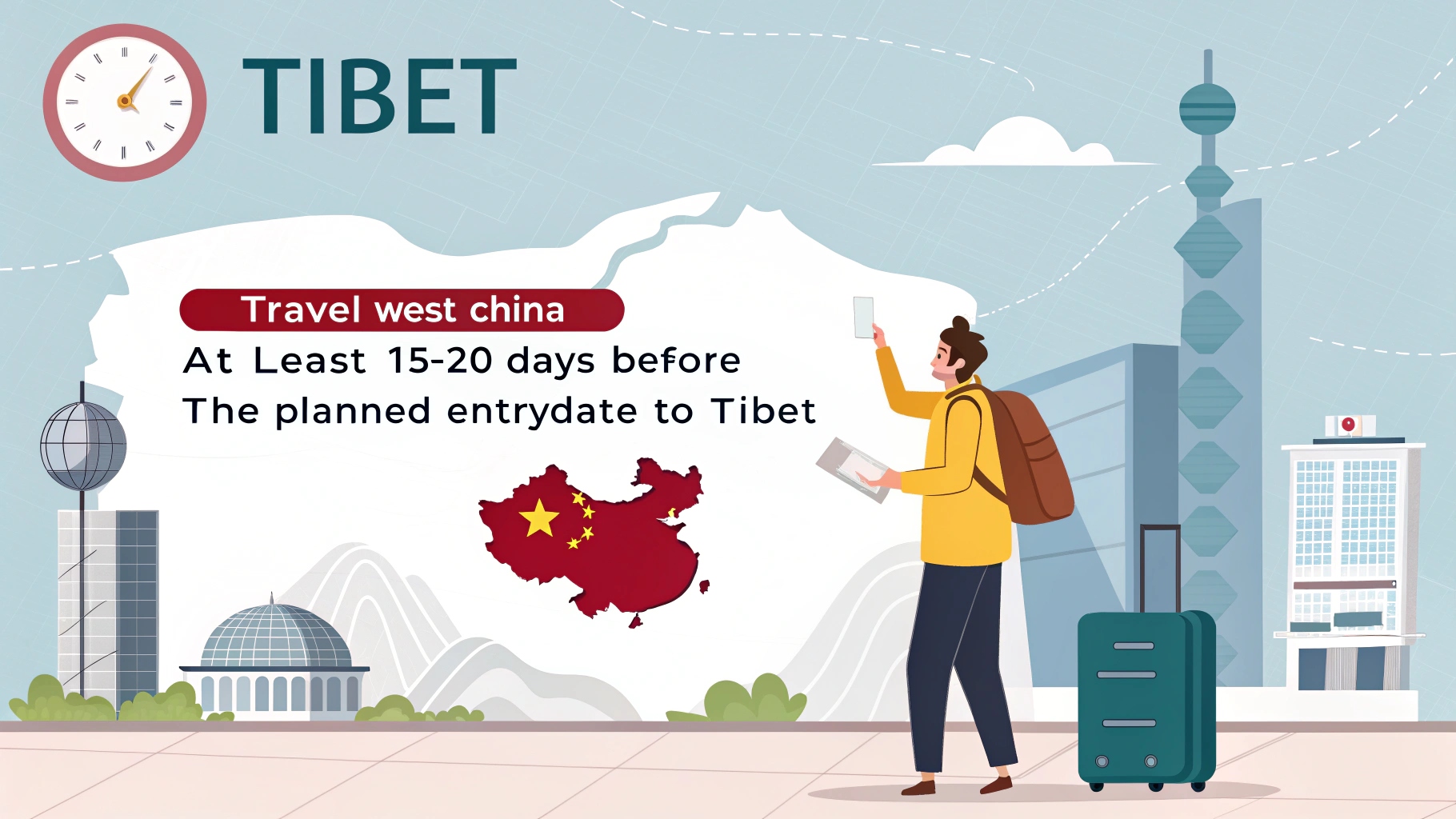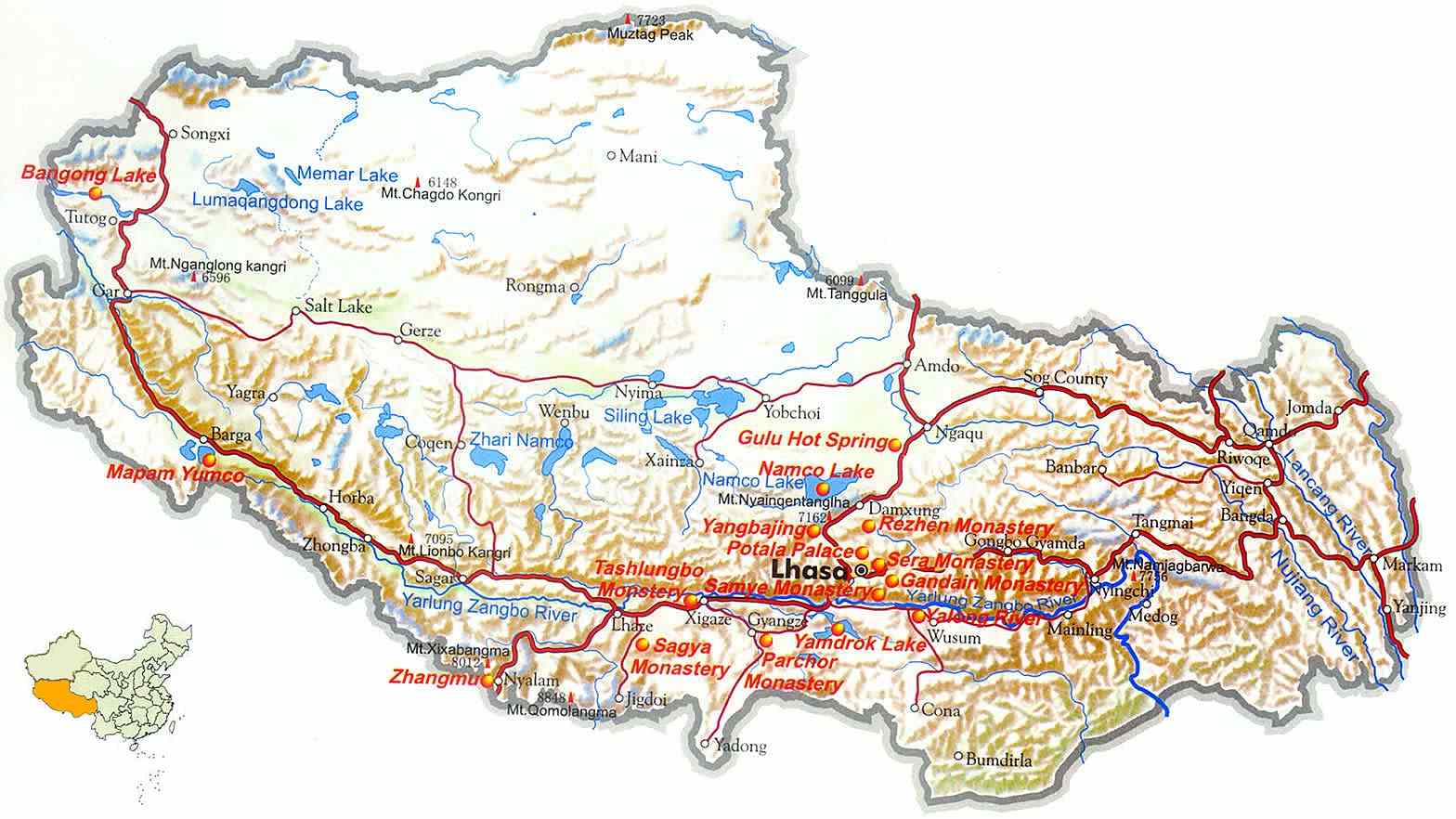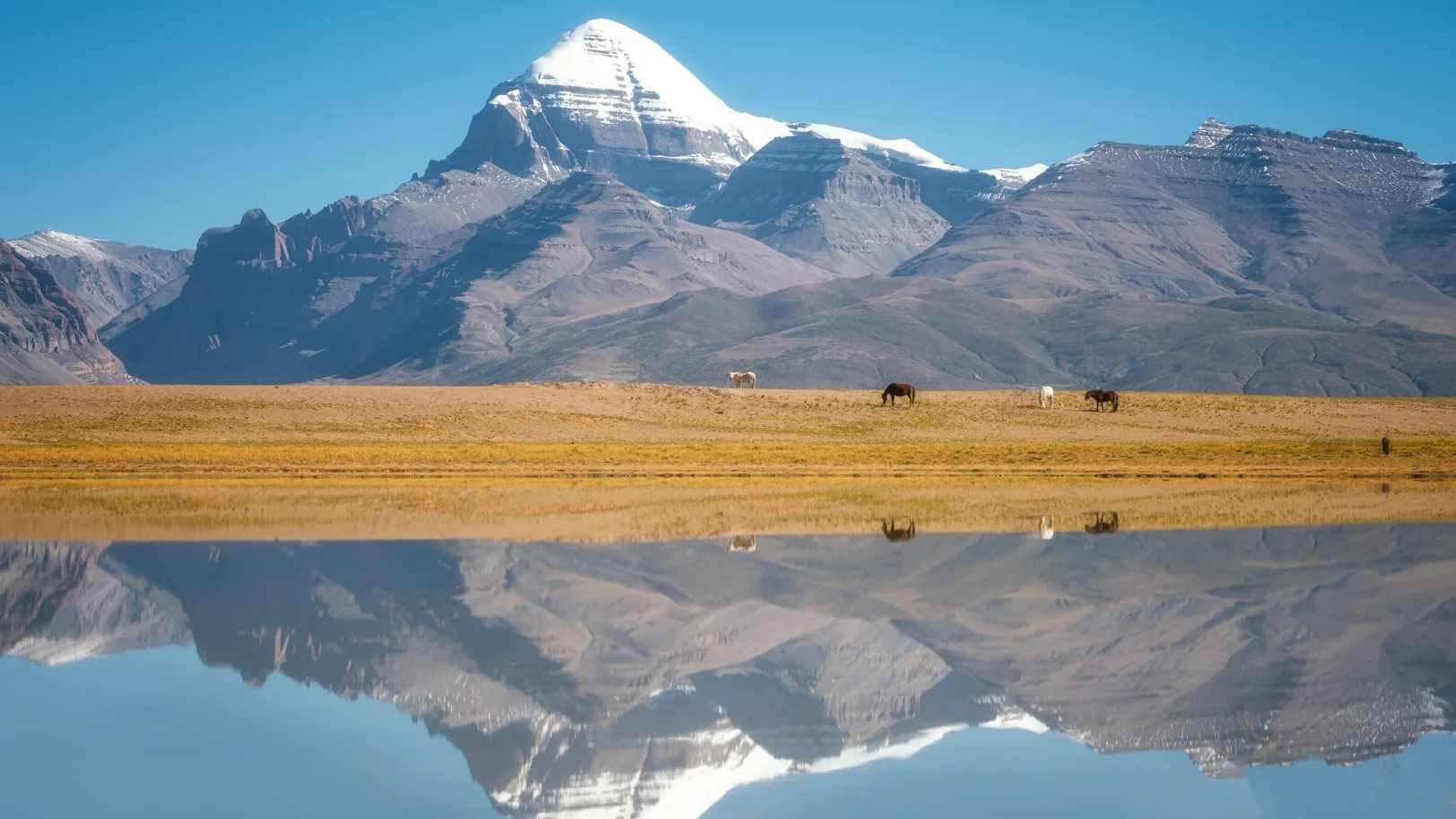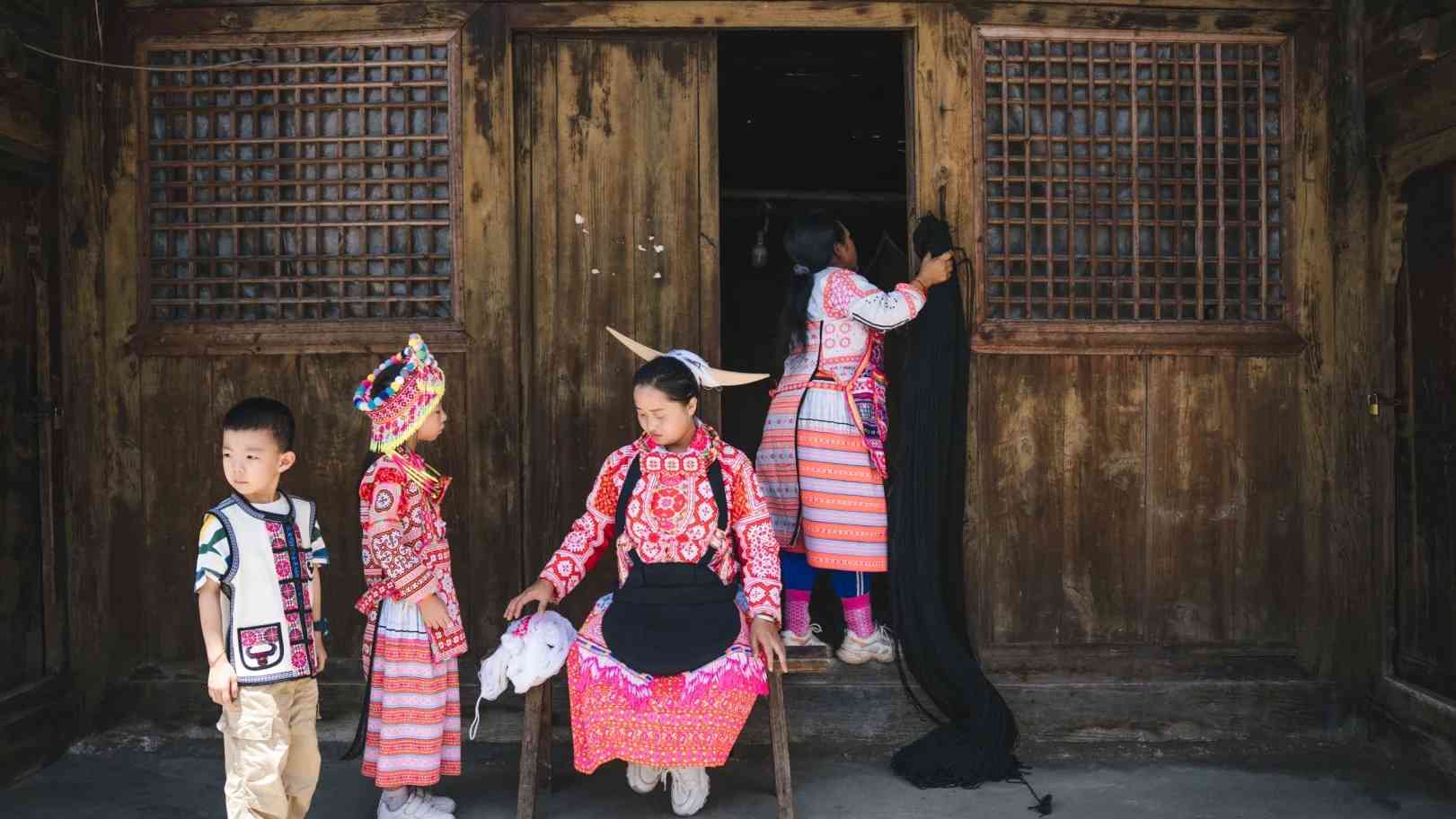Dreaming of Tibet's stunning landscapes but worried your bank account can't handle it? The rules seem complicated, and maybe it sounds expensive. But good news: visiting Tibet without spending a fortune is definitely possible if you plan smartly!
Yes, you can explore the wonders of Tibet affordably. The best strategies include joining group tours, traveling during the shoulder season (April-May, October-November), and opting for budget-friendly local guesthouses and restaurants. Remember, a permit is always required and comes as part of a booked tour.
Getting to Tibet on a budget might look like a challenge because of the specific rules and potential costs. But don't worry, I'm here to help break it all down for you. Let's look closely at what makes up the costs and how you can manage them to make your dream trip happen without overspending.
Is Tibet expensive to visit?
Heard that a trip to Tibet costs a lot of money? Are you concerned that permits, mandatory guides, and private transport will add up too fast? Don't let that stop you; there are certainly ways to control your spending and make the journey more affordable.
Tibet can cost more than other destinations in China mainly because you absolutely need permits and a mandatory guide and driver. However, choosing to join a group tour drastically reduces these costs compared to a private trip, making it a much more budget-friendly option.
Let's explore why Tibet often seems expensive and how you can keep those costs in check. The main price drivers are things required by regulations that you don't usually need for travel elsewhere in China. These are unavoidable, but how you arrange your trip makes a big difference.
Understanding the Main Costs in Tibet
The idea that Tibet is expensive often comes from these necessary expenses:
- Tibet Travel Permit Logistics: While there's no separate "fee" listed for the Travel Permit itself, the work involved for a travel agency like us, Travel West China, to prepare documents, apply, follow up, and deliver the permit is part of your total tour package price.
- Mandatory Guide & Private Transport: Regulations state all foreign visitors must have a licensed local guide and a dedicated vehicle with a driver for their entire time in the Tibet Autonomous Region (TAR). This is non-negotiable and adds a significant daily cost, especially impacting solo travelers or couples.
- Getting There: Flights or the train to Lhasa can be a major expense, particularly during the peak summer months.
- Within Tibet: Even after arrival, the required private vehicle adds to the daily expenses, covering fuel, tolls, and the driver's costs.
How Can You Make Your Tibet Trip Cheaper?
Here are practical ways to manage these costs:
- Join a Group Tour: This is the most effective way to save. You split the high costs of the guide, driver, and vehicle with fellow travelers. We offer various group tour itineraries hitting popular spots like Lhasa, Everest Base Camp, and Mount Kailash, designed to be economical.
- Travel Off-Peak (Shoulder Seasons): The high season runs from June to September, bringing higher prices for everything. Consider traveling in April-May or October-November. The weather is usually pleasant, sights are less crowded, and costs for flights, trains, and accommodation are lower.
- Choose Budget Accommodation: While fancy hotels are available, numerous clean, comfortable, and affordable guesthouses and simpler hotels exist, especially in Lhasa and Shigatse. We can help find options that suit your budget within your tour package.
- Eat Locally: Dining at small, local Tibetan or Chinese restaurants is much cheaper than eating at tourist-oriented or hotel restaurants. Plus, it’s a great way to experience authentic local flavors!
Here's a quick comparison to illustrate the difference:
| Expense Item | Private Tour | Group Tour | Impact on Budget |
|---|---|---|---|
| Guide Cost | Paid fully by your small party | Shared among all group members | High |
| Driver & Vehicle | Paid fully by your small party | Shared among all group members | High |
| Permit Admin | Included in total cost | Included, cost effectively spread | Medium |
| Accommodation | Flexible Choice (can pick budget options) | Often pre-selected (typically budget/mid-range) | Medium |
| Overall Price | Significantly Higher per person | Much Lower per person | Very High |
So, while certain costs in Tibet are fixed by rules, making it seem pricier than backpacking freely elsewhere, smart choices like joining a group tour and traveling during the shoulder season make it accessible even if you're watching your budget carefully.
Can you freely travel to Tibet?
Are you dreaming about grabbing your backpack and just exploring Tibet on your own schedule? Maybe you've heard conflicting information about needing guides or special permissions? Let's get straight to the facts about the rules for foreign travelers.
No, unfortunately, independent travel for foreign passport holders is not permitted in the Tibet Autonomous Region (TAR). You are required to book a tour package through a licensed travel agency, which must include a guide, a driver with a vehicle, and all the necessary travel permits.
This regulation often catches travelers by surprise, especially those accustomed to independent exploration in other countries. I remember discussing this with Shahrina, a travel agency owner from Malaysia. She's very experienced but was initially planning to arrange things loosely for her clients, assuming Tibet worked like other places. It required a detailed explanation about the specific, strict regulations enforced within the TAR boundaries.
Why Can't Foreigners Travel Independently in the TAR?
This isn't a new rule; it's a long-standing policy set by the Chinese government specifically for the Tibet Autonomous Region. Understanding the basis helps:
- Official Government Policy: This is the primary reason. The rules mandate that non-Chinese citizens must have their travel pre-arranged through an agency, including permits, guides, and transport.
- Geographical Area: These strict rules apply specifically to the TAR (which includes Lhasa, Shigatse, Everest Base Camp on the Tibet side, Mount Kailash, Ngari, Nyingchi, etc.). Important note: Tibetan culture extends into parts of neighbouring provinces like Sichuan, Qinghai, Gansu, and Yunnan. Travel in those Tibetan areas outside the TAR often has fewer restrictions, allowing more independent movement, though access to certain sensitive monasteries or areas might still require permits occasionally. But for the main TAR destinations, the rules are firm.
- No Way Around It: There are currently no exceptions for backpackers, solo explorers, or budget travelers wanting to wander freely inside the TAR. You cannot simply show up and travel around, nor can you board a flight or train to Lhasa, or pass the road checkpoints into the TAR, without the official permit linked to your organized tour.
What Does "Organized Tour" Actually Mean?
It doesn't always mean being stuck on a big bus with dozens of people (though that's one budget-friendly option). It simply means your trip must include:
- Using a Licensed Agency: You must arrange everything through a registered agency authorized to handle foreign travel in Tibet, like Travel West China.
- Pre-Approved Itinerary: Your travel route needs to be planned out and submitted for approval when we apply for your permit. While we pride ourselves on creating flexible, custom private tours, once the permit is issued based on that plan, you generally need to stick to it.
- Mandatory Guide & Driver: A licensed Tibetan guide and a private vehicle with its driver must be with you for your entire journey within the TAR. The only exception might be some free time within Lhasa city limits, which you can arrange with your guide.
So, while the complete freedom of independent backpacking isn't an option within the TAR, a well-organized tour – whether a budget-friendly group departure or a tailored private journey – is the key to experiencing this incredible region while respecting and following the necessary regulations.
How much is a travel permit for Tibet?
Are you trying to budget for your Tibet trip and wondering about the specific cost of the Tibet Travel Permit? Maybe you're thinking you can just buy this document separately and handle the rest yourself? Let's clear up exactly how the permit cost actually works.
The Tibet Travel Permit itself doesn't have a standalone price tag that you can pay directly. Instead, the cost associated with obtaining the permit is included as part of the overall price of the tour package you book with a licensed travel agency like ours. You cannot purchase the permit by itself.
This is one of the most common misunderstandings, especially for budget travelers trying to minimize costs. I frequently receive emails asking, "Can I just buy the permit from you?" For instance, someone like Mr. Stephen Toh from Singapore, planning a family holiday, might read "permit required" and assume it's like a visa fee they can pay independently. However, the system in Tibet works differently.
Why Can't I Just Buy the Permit?
The Tibet Travel Permit (often called TTP) is an official document issued by the Tibet Tourism Bureau (TTB) in Lhasa. Here’s why it’s tied to a tour:
- Application Through Agencies Only: Only registered travel agencies operating in China are authorized to apply for permits on behalf of international travelers. Individuals cannot apply for the permit directly to the government bureau.
- Tour Itinerary is Mandatory for Application: When an agency applies for your permit, the TTB requires submission of a detailed, fixed itinerary outlining your travel plans within Tibet. This means the permit is fundamentally linked to a pre-arranged and confirmed tour. The authorities need to know your planned route and which agency (and guide) is responsible for overseeing your visit.
- No Legal Standalone Sales: Because the permit application process requires proof of a booked tour with a fixed itinerary and agency sponsorship, it's impossible for agencies to legally or practically issue just the permit without an accompanying tour service. Attempting to do so would violate government regulations.
What Does the "Permit Cost" within the Tour Price Cover?
When we say the permit cost is included in your tour package, this bundled cost covers several aspects:
Agency Service Fee: This accounts for our staff's time and expertise in preparing your application, ensuring all documents are correct, submitting the paperwork to the TTB, liaising with officials, tracking the status, and managing the logistics.
Government Liaison & Processing: It covers the administrative aspects of the TTB reviewing and issuing the physical permit document.
Secure Delivery: It includes the cost and effort of securely getting the original permit document into your hands before you enter Tibet. This often involves express courier services to your hotel in a major Chinese city like Chengdu, Xi'an, Beijing, or Shanghai.
What About Other Permits?
Yes, depending on exactly where your itinerary takes you within Tibet, you might need additional permits besides the main TTP:
Alien's Travel Permit (ATP)1: Often required for travel to areas outside Lhasa municipality, such as Shigatse (en route to Everest Base Camp), Samye Monastery, or Tsetang. Your guide typically applies for this after you arrive in Lhasa, using your passport and TTP.
Military Permit & Border Pass2: Needed for travel to highly sensitive border areas or remote regions like Mount Kailash (Ngari Prefecture) or certain parts of Nyingchi near the Indian border. These require longer application times (must be done well in advance) and more complex procedures.
Don't worry about these extra permits; as your chosen agency, We Travel West China handles the application process for all necessary permits based on your confirmed itinerary. Your main responsibility is to provide us with clear scans of your passport and Chinese visa (usually at least 20 days before your trip) and book the tour package. The key takeaway is: the permit is an integral, inseparable part of the organized tour service.
How to get a Tibet travel permit in China?
Are you already traveling or staying in China and have suddenly decided you'd love to visit Tibet? Perhaps you're wondering if being physically present in China makes it quicker or easier to get the permit? The answer is you still need to follow the standard procedure through an agency, and time is still crucial.
Even if you are already inside China, you cannot apply for or obtain the Tibet Travel Permit directly yourself. You must contact a licensed travel agency, such as Travel West China, ideally at least 15-20 days before your planned entry date to Tibet, to arrange your tour and have the agency apply for the permit on your behalf.
It happens sometimes – travelers exploring other regions of China, or maybe business visitors like Shahrina attending a conference in Shanghai, suddenly get the inspiration for a quick side trip to Lhasa. They might think, "I'm already here, surely I can sort out the permit quickly." However, the permit application process itself has a set timeframe and requires agency handling, regardless of whether you apply from overseas or from within mainland China.
The Permit Application Process (When You're Already in China)
Here’s a step-by-step look at how it works if you decide to arrange a Tibet tour while you're in China:
- Contact an Agency Immediately: Get in touch with us (Travel West China) or another licensed agency as soon as possible. Don't delay! The official processing time is the biggest factor.
- Finalize Itinerary & Confirm Booking: Decide quickly on your preferred Tibet itinerary (a budget group tour might be easiest to join short-notice if available, or a private tour) and confirm the booking with payment. The faster this is locked in, the sooner we can start the permit application.
- Submit Required Documents: You'll need to send us clear digital copies (scans or photos) of your passport's photo page and your current, valid Chinese visa page. Ensure your visa is valid long enough to cover both the permit application time and your entire trip in Tibet. Tourist (L) visas are generally the most straightforward. Other visa types (like Work Z, Business F, Student X) might require additional supporting documents (e.g., a letter from your employer or university).
- Agency Submits Application: We will carefully compile all necessary documents along with your confirmed tour itinerary and submit the complete application package to the Tibet Tourism Bureau (TTB) in Lhasa.
- Official Processing Time: The TTB officially requires around 8-15 working days to process the permit application. This can sometimes take longer, especially during peak seasons or holidays. This official timeframe is why contacting us 15-20 days (or even more) in advance is highly recommended. It's very difficult, often impossible, to rush this official process.
- Permit Issued & Collected: Once the TTB approves the application, they issue the physical, original permit document. Our staff in Lhasa or Chengdu will collect it.
- Permit Delivery to You: This is crucial. We then need to get the original paper permit to you before you check in for your flight or train to Lhasa (or Nyingchi). The most common method is using a reliable express courier (like SF Express) to deliver it to your hotel in the mainland Chinese city you'll depart from (e.g., Chengdu, Xi'an, Beijing, Shanghai, Kunming, Chongqing, Xining). In some cases, particularly if departing from Chengdu, our local guide or staff might be able to meet you at the airport/train station with the permit. You absolutely must present the original permit at check-in.
Key Points to Remember When Applying from Within China:
- Lead Time is Non-Negotiable: The TTB processing time is the main bottleneck. Last-minute trips (trying to arrange everything with less than 15 days before entry) are generally not feasible.
- Check Your Chinese Visa: Ensure your current visa is valid for your intended stay and is the correct type. Permit applications can sometimes be more complex for non-L visas.
- Original Permit is Essential: You cannot travel on a copy or digital scan. You need the physical paper permit in hand to board your transport into the TAR.
So, while being in China might make communication slightly quicker, the fundamental requirement remains: book a complete tour package through a licensed agency well in advance to allow sufficient time for the mandatory permit application process.
Conclusion
Visiting Tibet affordably is possible, mainly by joining group tours and traveling in the spring or fall. Remember, permits are essential, always included with agency-booked tours, and independent travel for foreigners isn't allowed in the TAR.
-
Exploring the details of the Alien's Travel Permit (ATP) is crucial for travelers planning to visit areas outside Lhasa, ensuring compliance with regulations. ↩
-
Learning about the Military Permit & Border Pass is essential for those wishing to explore sensitive border areas, ensuring a hassle-free travel experience. ↩



